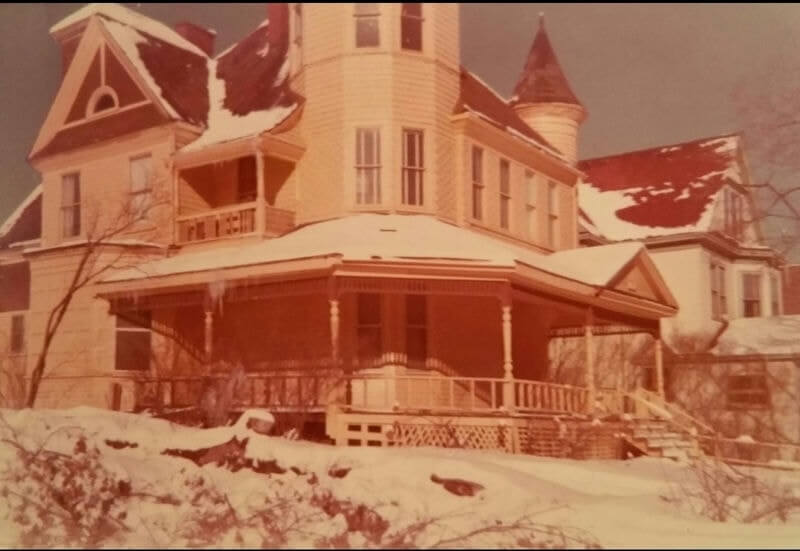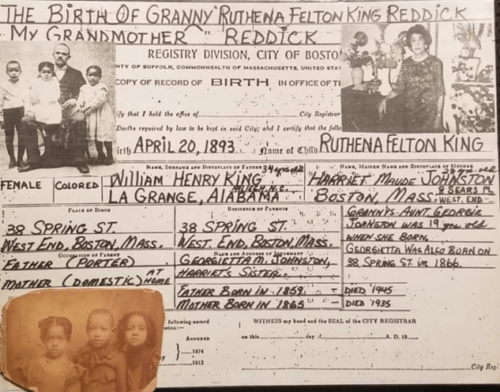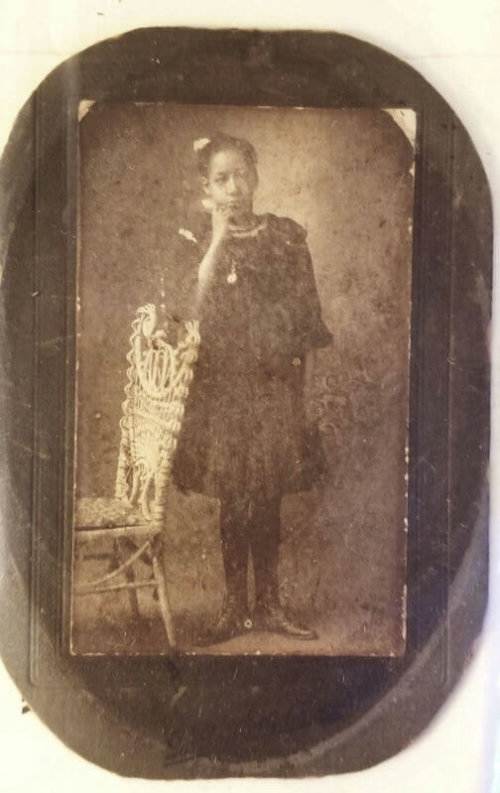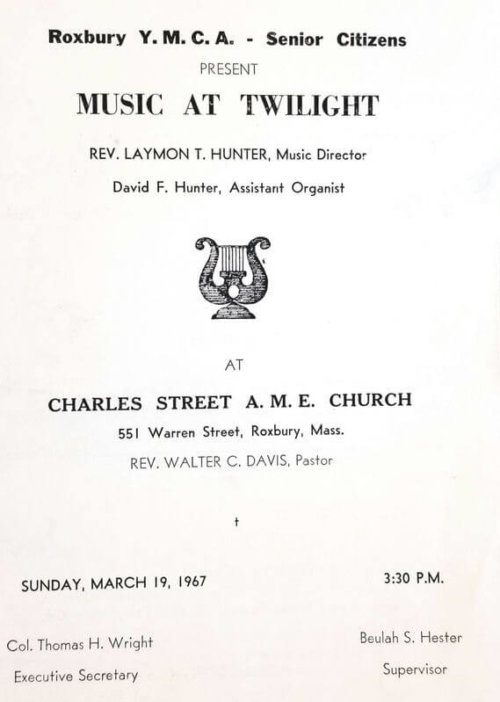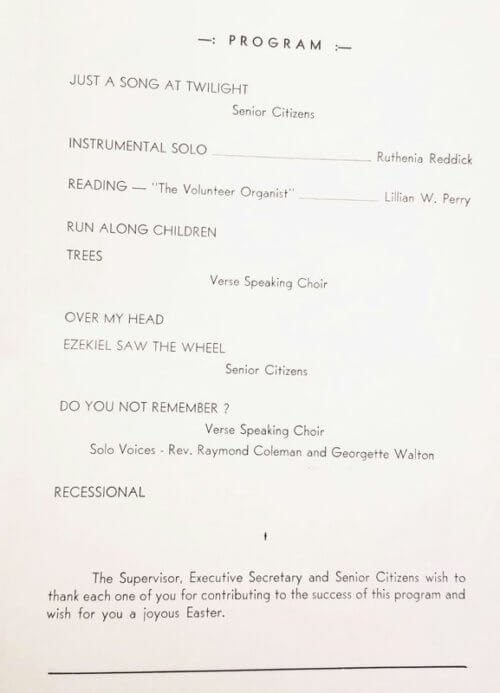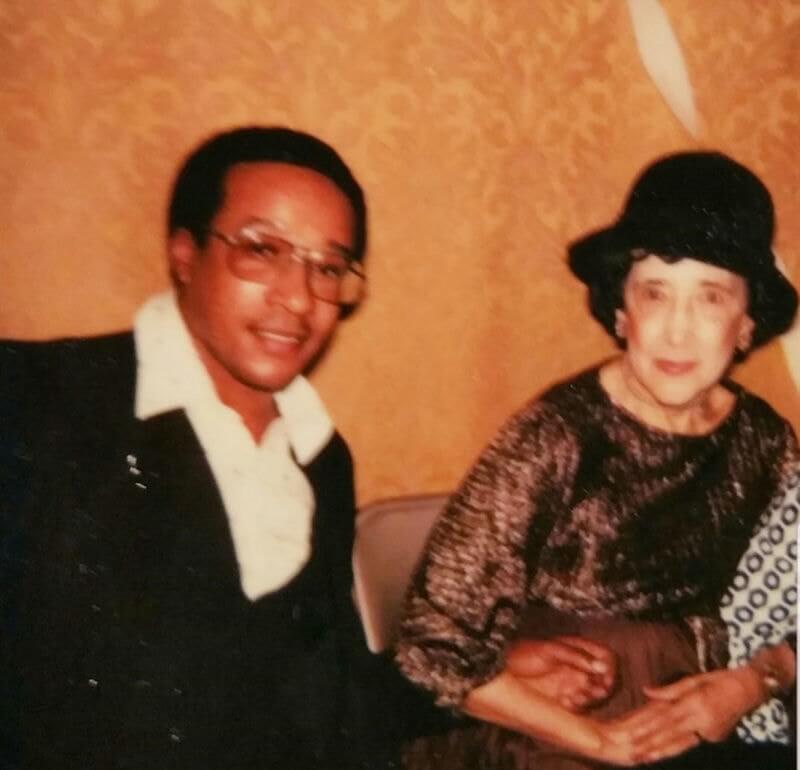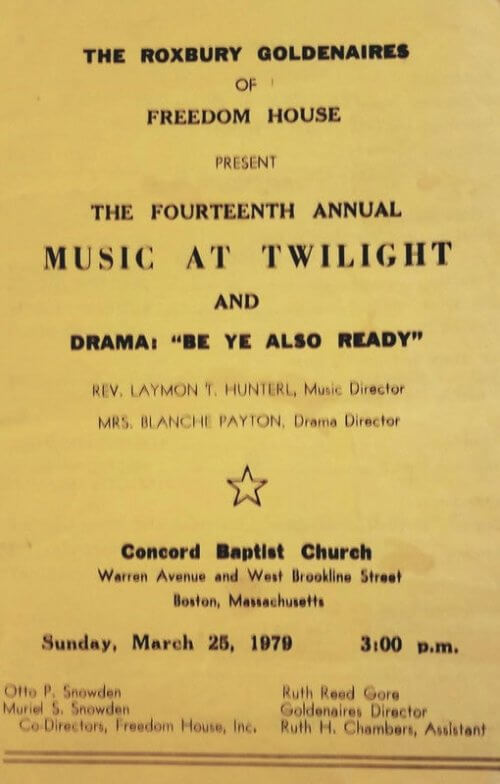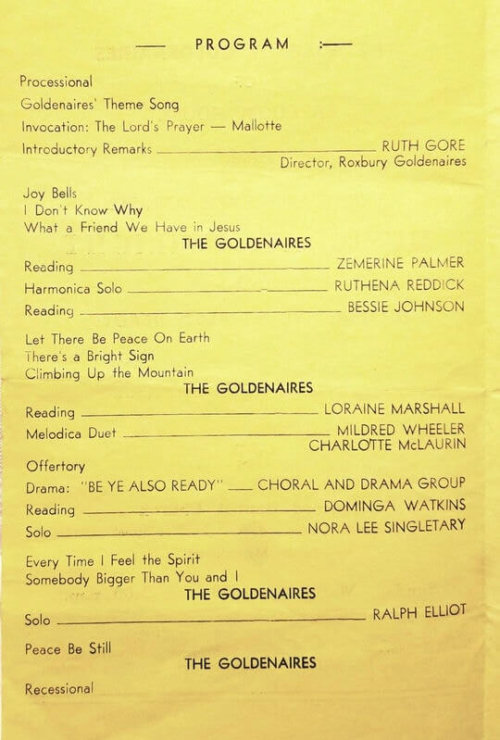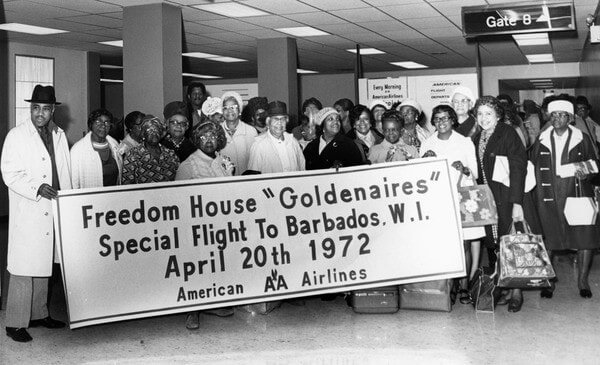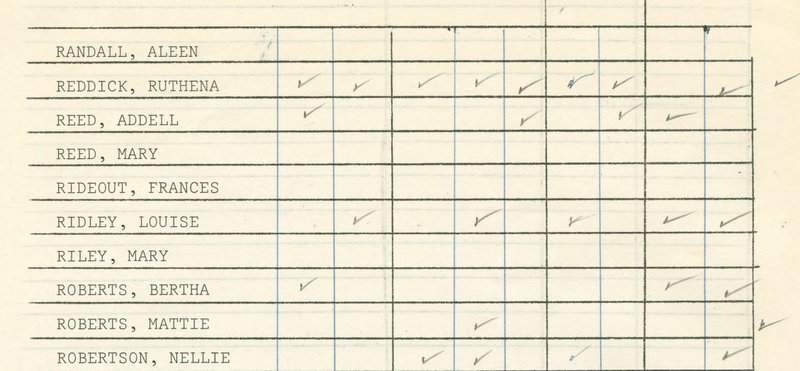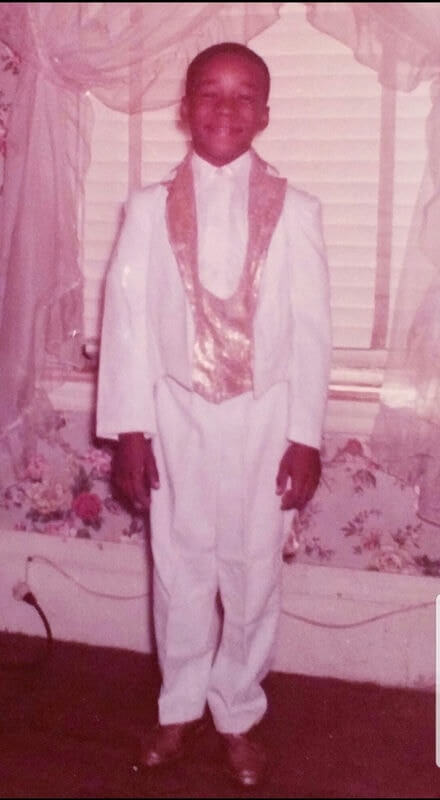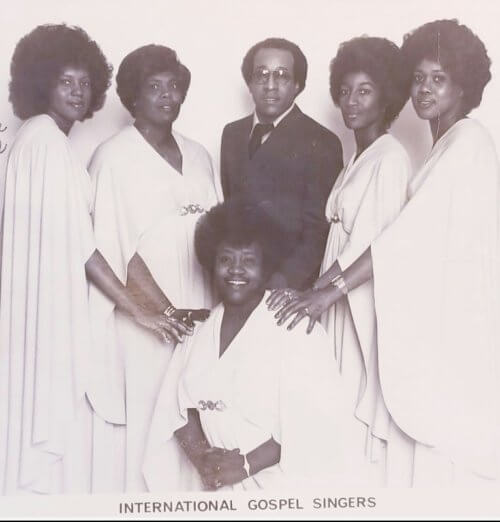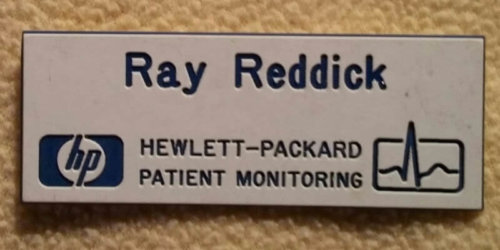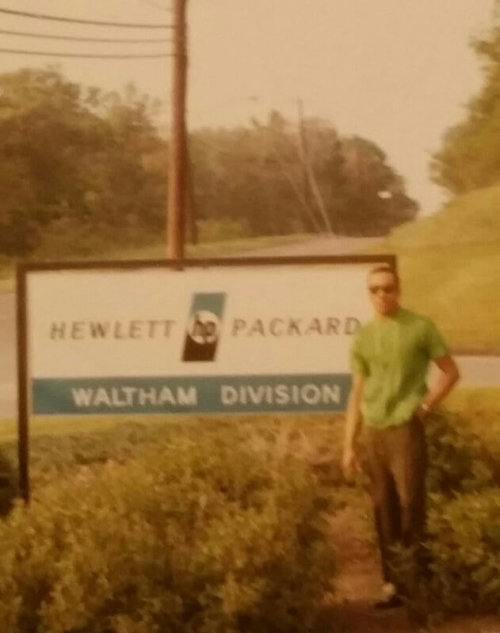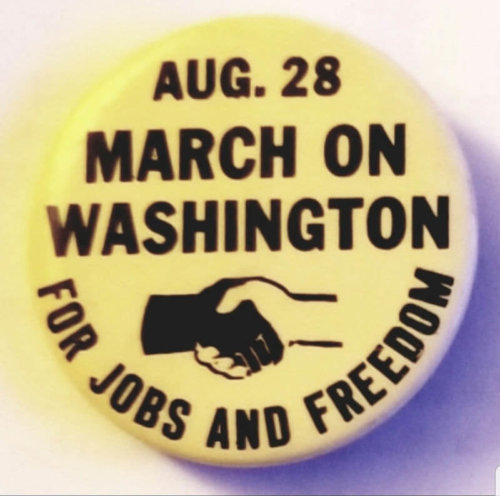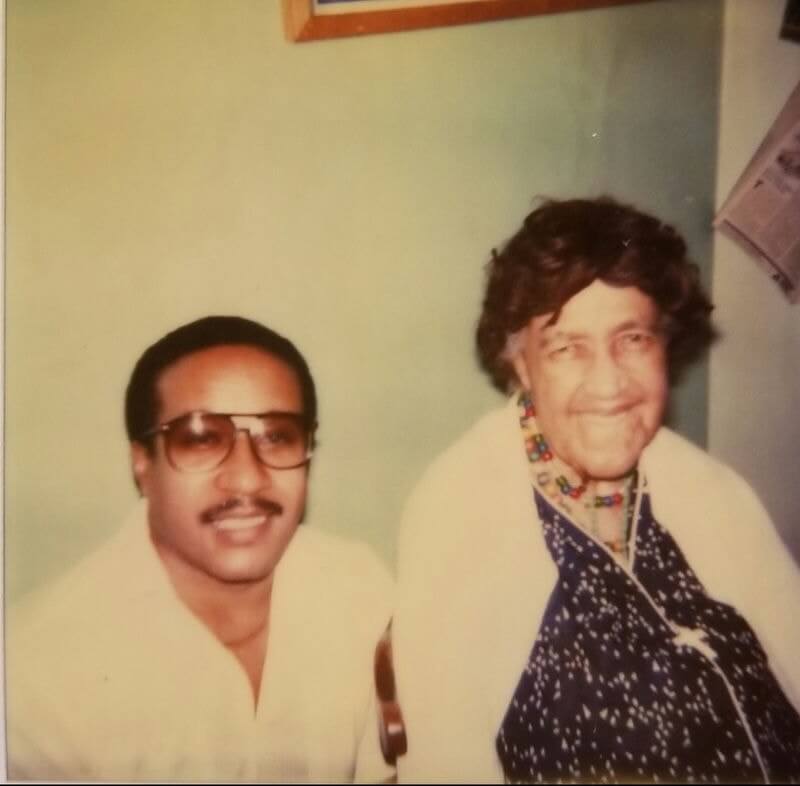The Life of Ruthena Felton King Reddick and Ray Reddick
Raymond Reddick, a lifelong Boston resident who is now 74 years old, has spent decades collecting, documenting, and speaking to different audiences about his extensive African-American family history with deep ties to the historic West End. After his grandmother, Ruthena Felton King Reddick, passed away in 1985, Ray began his ongoing genealogical research, which started with stories from family members and countless boxes of family artifacts in his possession. Ray Reddick approached The West End Museum to collaborate on a project that highlights his nineteenth-century ancestors — West Enders and Black Bostonians — captivating lives. Northeastern University’s Reckonings project has collaborated with Reddick and The West End Museum to produce, after a series of oral history interviews, a two-part, co-created report that spotlights Ray Reddick’s family history.
Ruthena Felton King Reddick, Ray Reddick’s grandmother, was born in 1893 at 38 Spring Street in the West End. Her parents were William H. King and Harriet Maude Johnston. Ruthena had five siblings: Zulee King Felton (who passed away shortly after birth), William Randolph King (born 1890), Matilda Grace King (born 1892), James Gordon King (1900-1917), and Bernice Mary King (born 1895). William H. King’s mother in Alabama was named Mary Felton, and thus he gave the middle name Felton to Ruthena, and the middle name Mary to Bernice. Ruthena and Cornelius Thomas Reddick married in 1913, and started their family at 67 Windsor Street in the South End. They had ten children, including Ray’s mother, Geraldine (born 1929). Ruthena’s last child was born in 1932. Ruthena Felton King Reddick was the matriarch of the Reddick family when Ray was born on April 18, 1948. Ruthena and Cornelius T. Reddick lived at multiple addresses over the years, from 637 Shawmut Avenue to a three-floor Victorian home on 175 Humboldt Avenue, five streets down from Franklin Park. The Humboldt Avenue home was where Ray was born and spent his childhood. Ruthena Felton King Reddick and her descendants, including Ray Reddick, were very active in the communities of the South End and Roxbury.
Apart from being the matriarch of the Reddicks, Ruthena was involved in many activities. Her day jobs included working at a shoe factory, and later at Filene’s in downtown Boston. She belonged to multiple service organizations in which Boston’s Black women came together to support their communities. In that capacity, Ruthena Felton King Reddick organized many functions to raise money for charities, including a “spring tea” event with her own service organization on Massachusetts Avenue. Ruthena was a talented clairvoyant, who held private meetings at her home with ten to twenty people at a time. Ruthena belonged to a Spiritualist congregation on 26 Exeter Street, and it was within that tradition where she practiced as a spiritual medium.
Most importantly, Ruthena Felton King Reddick was a talented musician who sang at numerous churches and played harmonica and piano. One of Ray’s earliest memories, at the age of four, was of his grandmother bringing a piano into her house on 175 Humboldt Avenue. The piano could not fit up the stairs, so Ruthena had to temporarily take out the kitchen window. When Ruthena sat down at the piano and sang, Ray sat beside her and looked at her sheet music. Throughout her long life, Ruthena Felton King Reddick sang at almost every church in South Boston, Roxbury, and East Boston, as well as the original Harriet Tubman house in the South End (demolished in 2020 after extensive preservation efforts failed). Ray’s grandfather, Cornelius, told him that Ruthena got the chance to sing at churches in Charlestown and South Boston because she was fair-skinned enough that they did not know she was Black. One of Ruthena’s sons, Cornelius Thomas Reddick, Jr., would accompany Ruthena’s singing with either guitar or harmonica, and the two of them were very close. The Roxbury churches where Ruthena sang included the 12th Baptist Church, Charles Street AME Church, at St. John’s.
Ruthena Felton King Reddick was also very involved with the Freedom House Goldenaires, the senior citizens’ choir connected to Freedom House, a community organization founded in Roxbury by Otto and Muriel Snowden in 1949. Freedom House, and the Snowden’s in particular, were instrumental in implementing urban renewal programs in Roxbury with great controversy, and were active in Boston’s school desegregation movement during the 1960s and 1970s. The organization was nicknamed “the Black Pentagon” for assembling Boston’s Black community leaders, tasked with assisting city officials on the implementation of busing. The Goldenaires were instrumental to Freedom House’s community outreach, particularly for senior citizens. Ruthena’s harmonica performances were noted in multiple editions of The Heart Line, the Goldenaires’ news bulletin, one of which stated in 1981 that at the Goldenaires’ Thanksgiving celebration, “Goldenaire Ruthena Reddick played familiar songs on her harmonica.” In August 1982, Ruthena and fellow harmonica soloist Kizziah Brown “had the audience humming the old favorites.”
Ray Reddick became a talented musician in his own right, as he learned to play piano and had also accompanied his grandmother during her church performances. Ray first took dance lessons at the Elma Lewis School of Fine Arts, which Elma Lewis founded in Roxbury in 1950, but he next practiced piano for three hours a day so he could play for Ruthena. Ray Reddick played piano for different quartet groups at churches as well, performances which Ruthena attended, and he also sang as a tenor. The first church Ray performed at was inside of a storefront, at a time in the 1960s when, as neighborhoods changed, Black people opened storefront churches before they could move into larger ones in Roxbury. Incidentally, the church Ray first performed at happened to be the one attended by Ruthena Felton Reddick Howell, Ray’s presently 107-year-old aunt whom he still talks to; sometimes he will sing and play piano over the telephone.
As a teenager, Ray Reddick became close with Reverend Michael Haynes of the 12th Baptist Church. Rev. Haynes, a great mentor to teenagers and a leader in the Civil Rights Movement, baptized Ray in his teenage years. Ray had a newspaper route around 1960 and 1961, during which time he kept up with the headlines and articles of civil rights activism in the Jim Crow South. Ray joined the youth NAACP chapter in Boston at the age of 14, and at 15 he attended the March on Washington in 1963, on a trip organized by Rev. Haynes and the Boston NAACP. At the March on Washington, Ray witnessed history when he heard Dr. Martin Luther King, Jr.’s “I Have a Dream” speech. In 1968, after Dr. King’s assassination, riots emerged on Blue Hill Avenue and other parts of Boston. In response to the growing, unmet needs of Black communities reflected in the riots, Hewlett Packard (HP) implemented an affirmative action program that offered good jobs for Black people to work outside their neighborhoods; previously, the largest technology companies like IBM did not seek out recruits from the neighborhoods where Black people lived. Ray Reddick was recruited to work for HP through this program. The company trained him and sent him to the Northeast Institute of Industrial Technology on Beacon Hill, in the building formerly occupied by the Phillips School. Ray’s grandfather and grandmother’s brothers all graduated from the Northeast Institute of Technology long before.
Ray Reddick worked for Hewlett Packard Medical Electronics Company in Waltham, MA from 1968 to 1991. As an electronic engineer, Ray built all sorts of technologies for patient monitoring, including heart monitors and baby monitors. He went back to school every five years in order to keep up with technological changes, and over time he became very skilled with computers. With these skills, Ray taught computer lessons at Freedom House, as well as the Harriet Tubman House in the last years before it closed. Ray retired early in 1991, after twenty-three years with HP, and returned to his passion for music.
After Ruthena Felton King Reddick passed away in 1985, Ray Reddick was inspired to begin his genealogical research from the many boxes of pictures and documents kept in his family over generations. Ray had the chance to talk about his family’s history with his aunts, then in their nineties, before they passed. Ray is especially grateful for the help he received from his “Aunt Bee,” Bernice Mary King Kimball, who helped Ray identify family members in old pictures. Ray noted that having his aunts identify people from old photographs was “the best thing I could do” at the start of his research process. As Ray learned of his many relatives in Halifax, Nova Scotia, Boston, and Chicago, it was initially an arduous process to put as much information together as he could by himself. But Ray knew he was passionate about history from his earliest days, when older family members would tell him many stories, or when he attended historically significant events such as the March on Washington. Ray Reddick collected his ancestors’ birth and marriage certificates, looked at Census data, and did street searches to look back at old residences.
Since 1985, Ray has collected an impressive amount of family history and collaborated with the West End Museum to reproduce it here. Ray has spoken at multiple meetings of genealogical societies and written stories about his ancestors. There are still unopened boxes he plans to pore through very soon, and more of the Reddick family history yet to be documented.
Ray Reddick’s meticulous genealogical research over decades has made it possible for the West End Museum and Reckonings project to co-create this family oral history. Part One of the Reddick Story, which introduces Ray Reddick’s African-American ancestors in the West End, can be found here.
Article by Adam Tomasi, Rose-Laura Meus, Ray Reddick, and the Reckonings Project
Source: Freedom House, Northeastern University Archives and Special Collections (for Freedom House Goldenaires material), Digital Commonwealth, Measure (HP, 1971), and Ray Reddick.


